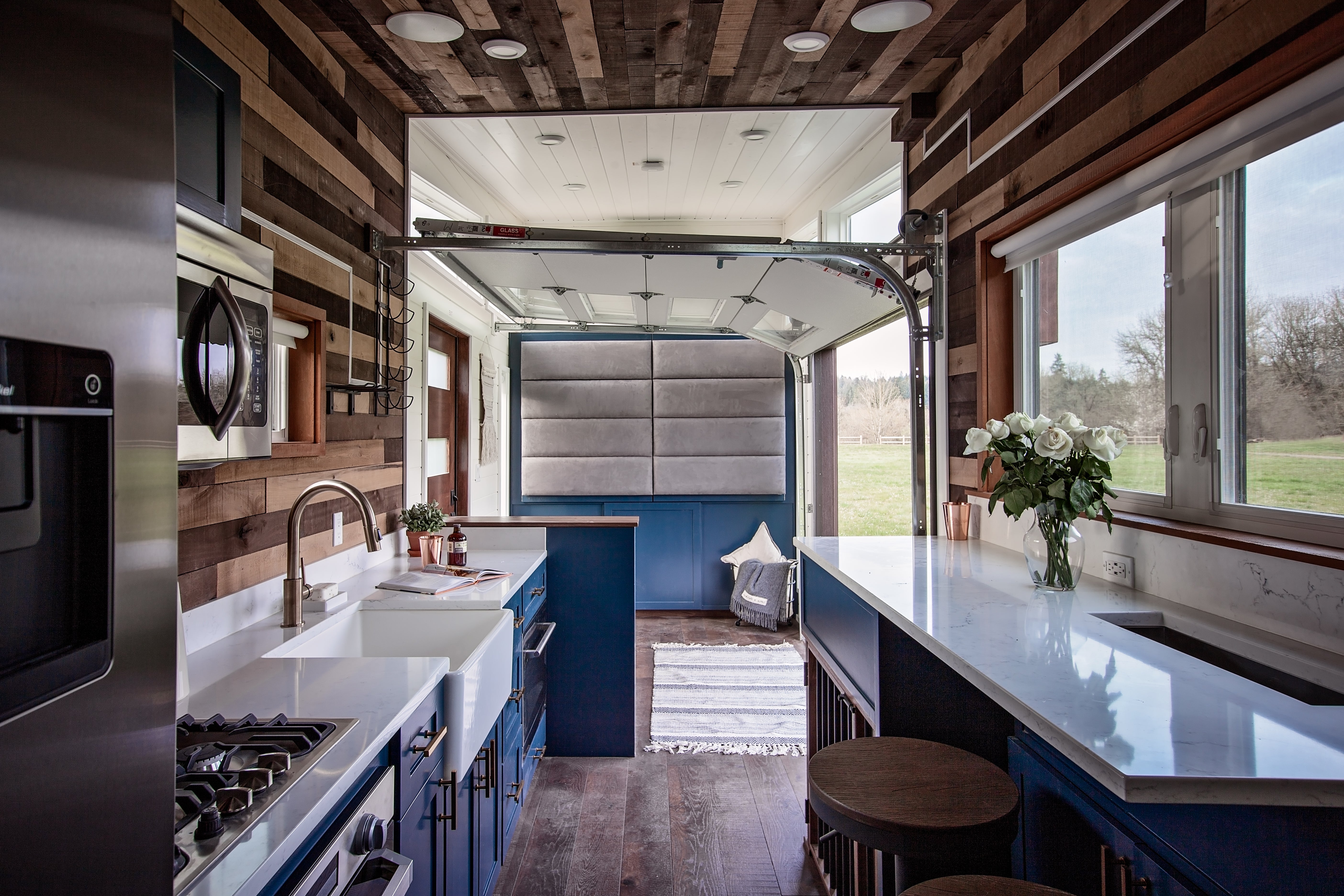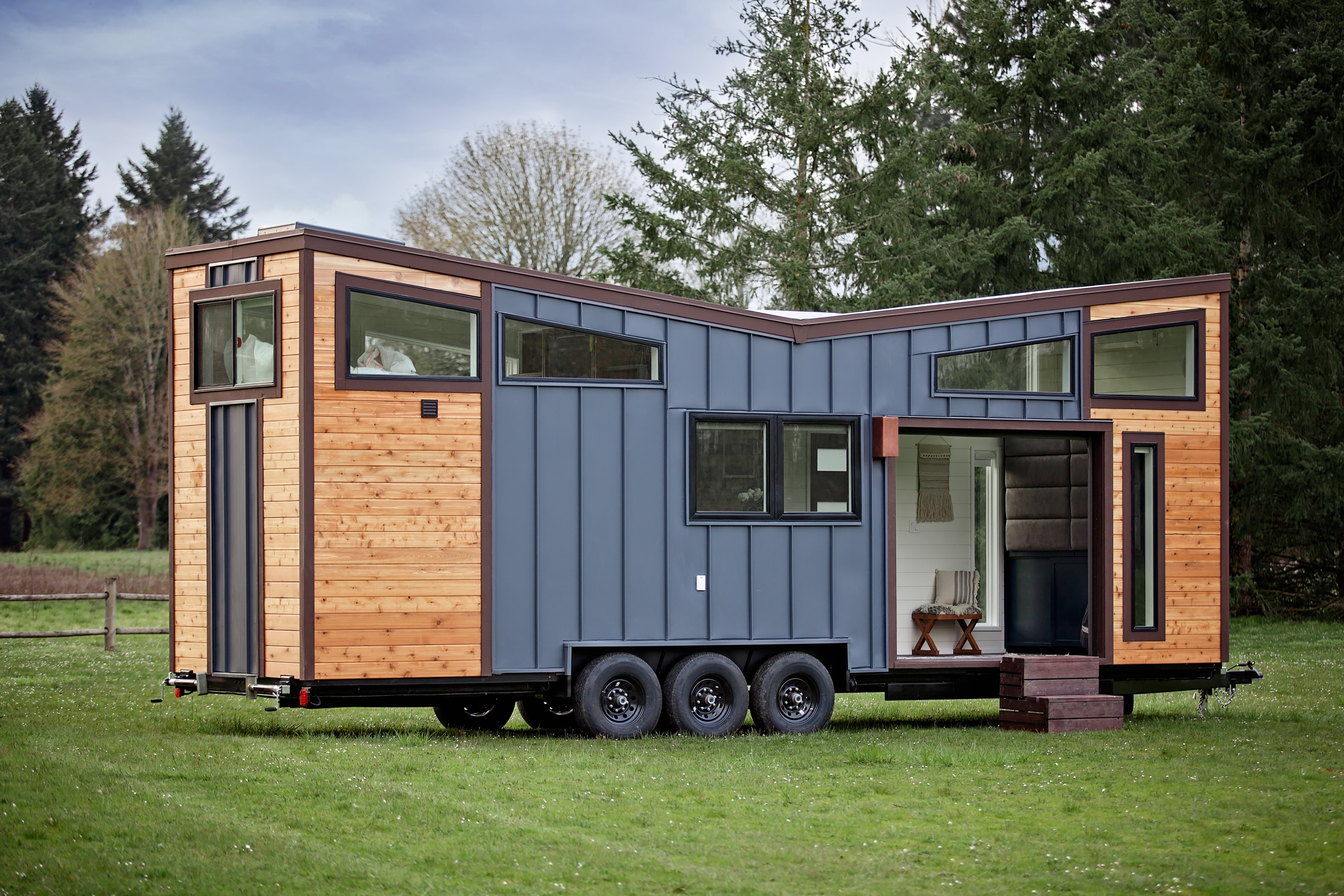Here’s a guide to keeping your outdoor area safe and enjoyable, so you can fully appreciate the perks of tiny house living without worrying about injuries.
1. Safe Grounding and Leveling for Tiny Homes
If your tiny home is on wheels, ensuring it's securely leveled and grounded is crucial. An uneven home can shift, increasing the risk of accidents when moving in and out. Ensure your home is:
- Properly anchored using jacks or wheel chocks.
- Positioned on stable, flat ground to prevent tipping or sliding.
- Regularly checked for wear or deterioration of anchors.
For tiny homes with outdoor decks or patios, make sure these structures are also level and sturdy. An uneven or wobbly deck can lead to tripping or falling accidents, especially if guests or children are playing outside.

2. Lighting and Visibility
Poor lighting can lead to accidents, particularly at night. Outdoor lights near entrances, along pathways, and around high-traffic areas like patios or steps are key to preventing slips and falls. Consider:
- Solar-powered or motion-activated lights for energy efficiency.
- Ground lights along pathways to prevent tripping on uneven terrain or landscaping elements.
- Proper lighting around outdoor workspaces like fire pits or BBQ areas.
3. Fall Protection
Many tiny homes have outdoor steps, decks, or raised platforms, which can become hazardous without proper precautions. Falling from any height can result in injury, so consider these tips:
- Install sturdy handrails along any steps or outdoor platforms.
- Use slip-resistant materials for steps and decks, especially if they’re exposed to rain or dew.
- Keep steps clear of obstacles like gardening tools or debris that could cause trips or falls.
4. Fire Safety
Outdoor fire hazards are a serious concern, especially if you’re in a wildfire-prone area or enjoy bonfires and barbecues. To reduce outdoor fire risks:
- Always keep fire pits or outdoor stoves a safe distance from your tiny home.
- Use a fire-resistant screen to prevent sparks from flying onto dry grass or wooden decks.
- Clear the area around the fire pit of dry leaves, branches, and other flammable debris.
- Have a fire extinguisher and a water source readily available.
If you use an outdoor grill or BBQ, keep it on a flat surface and away from overhanging branches or structures.
5. Water and Electrical Safety
For tiny homes with outdoor electrical setups (like for RVs or garden lighting), ensuring your wiring and outlets are waterproof and properly grounded is crucial to avoid shocks or fires. Make sure to:
- Use outdoor-rated extension cords and plugs.
- Keep cords and outlets covered and out of water-prone areas.
- Regularly inspect for wear and replace any damaged cords immediately.
For those living in rainy or snowy climates, proper drainage around your tiny home is essential to prevent water pooling, which could lead to electrical hazards or structural damage.
.jpeg)
6. Outdoor Tools and Equipment
If you keep outdoor tools like lawnmowers, axes, or gardening tools, be mindful of where and how they’re stored. Keeping tools scattered can create tripping hazards or even lead to serious injury. Tips for safe storage include:
- Installing a shed or outdoor storage box to keep sharp tools out of reach.
- Using hooks or shelves to keep items organized and off the ground.
- Keeping tools properly maintained to avoid malfunctioning equipment that could cause injury.
7. Wildlife and Insects
Living close to nature is one of the joys of the tiny house lifestyle, but it comes with its risks, especially from wildlife and insects. Depending on your location, you may need to:
- Secure trash bins to prevent attracting animals like raccoons or bears.
- Install mosquito nets and insect traps around windows, doors, and outdoor seating areas.
- Stay aware of local wildlife and ensure that outdoor cooking or dining doesn’t inadvertently invite pests.
8. Ladder Safety
Many tiny homes feature rooftop storage, solar panels, or gutters that require regular maintenance, often involving the use of ladders. To prevent falls:
- Always use a sturdy, properly-sized ladder that’s set on stable ground.
- Avoid climbing on wet or slippery surfaces, and use a spotter when possible.
- Take extra care when cleaning or adjusting rooftop installations like solar panels or satellite dishes.

9. Towing and Outdoor Maintenance
If your tiny home is mobile, ensuring that your towing vehicle and equipment are safe is just as important as your home itself. Before towing, check:
- Tires, tow bars, and hitch connections for wear and tear.
- Ensure your load is balanced, and all outdoor items (e.g., chairs, tools) are secured to prevent them from flying loose during transport.
If you perform routine outdoor maintenance, such as clearing brush or mowing lawns, wear appropriate protective gear like gloves, goggles, and boots to avoid injuries.
10. First Aid and Emergency Plans
Despite the best precautions, accidents can still happen. Preparing for emergencies is essential, especially when living off-grid or in remote areas. Make sure you have:
- A well-stocked first aid kit easily accessible both inside and outside your tiny home.
- Emergency contact information for local medical services or a Henderson, NV personal injury attorney if needed.
- An emergency evacuation plan, especially if you’re in a wildfire, flood, or earthquake-prone area.
Tiny homeowners often integrate outdoor spaces into their daily lives, from gardening to cooking to simply enjoying the view. By taking steps to ensure your outdoor areas are safe, you can avoid preventable injuries and accidents. From proper lighting and fall protection to fire safety and wildlife awareness, a little preparation can go a long way in protecting yourself and your guests in the outdoor spaces surrounding your tiny home.






Share: